Fisking the “War on Terror”
Once upon a time, a dangerous radical gained control of the US Republican Party.
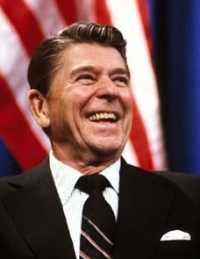
Reagan increased the budget for support of the radical Muslim Mujahidin conducting terrorism against the Afghanistan government to half a billion dollars a year.
One fifth of the money, which the CIA mostly turned over to Pakistani military intelligence to distribute, went to Gulbuddin Hikmatyar, a violent extremist who as a youth used to throw acid on the faces of unveiled girls in Afghanistan.
Not content with creating a vast terrorist network to harass the Soviets, Reagan then pressured the late King Fahd of Saudi Arabia to match US contributions. He had earlier imposed on Fahd to give money to the Contras in Nicaragua, some of which was used to create rightwing death squads. (Reagan liked to sidestep Congress in creating private terrorist organizations for his foreign policy purposes, which he branded “freedom fighters,” giving terrorists the idea that it was all right to inflict vast damage on civilians in order to achieve their goals).
Fahd was a timid man and resisted Reagan’s instructions briefly, but finally gave in to enormous US pressure.
Fahd not only put Saudi government money into the Afghan Mujahideen networks, which trained them in bomb making and guerrilla tactics, but he also instructed the Minister of Intelligence, Turki al-Faisal, to try to raise money from private sources.
Turki al-Faisal checked around and discovered that a young member of the fabulously wealthy Bin Laden construction dynasty, Usama, was committed to Islamic causes. Turki thus gave Usama the task of raising money from Gulf millionaires for the Afghan struggle. This whole effort was undertaken, remember, on Reagan Administration instructions.
Bin Laden not only raised millions for the effort, but helped encourage Arab volunteers to go fight for Reagan against the Soviets and the Afghan communists. The Arab volunteers included people like Ayman al-Zawahiri, a young physician who had been jailed for having been involved in the assassination of Egyptian president Anwar El-Sadat. Bin Laden kept a database of these volunteers. In Arabic the word for base is al-Qaeda.
In the US, the Christian Right adopted the Mujahideen as their favorite project. They even sent around a “biblical checklist” for grading US congressman as to how close they were to the “Christian” political line. If a congressman didn’t support the radical Muslim Muj, he or she was downgraded by the evangelicals and fundamentalists.
Reagan wanted to give more and more sophisticated weapons to the Mujahideen (“freedom fighters”). The Pakistani generals were forming an alliance with the fundamentalist Jamaat-i Islam and begining to support madrasahs or hardline seminaries that would teach Islamic extremism. But even they balked at giving the ragtag Muj really advanced weaponry. Pakistan had a close alliance with China, and took advice from Beijing.
In 1985 Reagan sent Senator Orrin Hatch, Undersecretary of Defense Fred Iklé and others to Beijing to ask China to put pressure on Pakistan to allow the US to give the Muslim radicals, such as Hikmatyar, more sophisticated weapons. Hatch succeeded in this mission.
By giving the Muj weaponry like the stinger shoulderheld missile, which could destroy advanced Soviet arms like their helicopter gunships, Reagan demonstrated to the radical Muslims that they could defeat a super power.
Reagan also decided to build up Saddam Hussein in Iraq as a counterweight to Khomeinist Iran, authorizing US and Western companies to send him precursors for chemical and biological weaponry. At one point Donald Rumsfeld was sent to Iraq to assure Saddam that it was all right if he used chemical weapons against the Iranians. Reagan had no taste in friends.
On becoming president, George H. W. Bush made a deal with the Soviets that he would cut the Mujahideen off if the Soviets would leave Afghanistan. The last Soviet troops departed in early 1989. The US then turned its back on Afghanistan and allowed it to fall into civil war, as the radical Muslim factions fostered by Washington and Riyadh turned against one another and used their extensive weaponry on each other and on civilians.
In the meantime, Saddam, whom the US had built up as a major military power, invaded Kuwait. The Bush senior administration now had to take on its former protege, and put hundreds of thousands of US troops into the Gulf and Saudi Arabia. The radical Muslim extremists with whom Reagan and Bush had allied in Afghanistan now turned on the US, objecting strenuously to a permanent US military presence in the Muslim holy land.
From 1994 Afghanistan was increasingly dominated by a faction of Mujahideen known as Taliban or seminary students (who were backed by Pakistani military intelligence, which learned the trick from Reagan and which were flush from all those billions the Reagan administration had funneled into the region). In 1996 Bin Laden came back and reestablished himself there, becoming the leader of 5,000 radical Arab volunteers that Reagan had urged Fahd to help come to Afghanistan back in the 1980s.
In the meantime, the US had steadfastly supported Israeli encroachments on the Palestinian Occupied Territories and the gradual complete annexation of Jerusalem, the third holiest city to Muslims.
Since the outbreak of the first intifada, Israeli troops had riposted with brutality. Even after the Oslo accords were signed, the size of Israeli colonies in the Palestinian West Bank and around Jerusalem doubled.
A steady drumbeat of violence against Palestinians by Israelis, who were stealing their land and clearly intended to monopolize their sacred space, enraged the Muslim radicals that had been built up and coddled by Reagan.
In 1998, al-Qaeda and al-Jihad al-Islami, two small terrorist groups established in Afghanistan as a result of the Reagan jihad, declared war on the United States and Israel (the “Zionists and Crusaders”). After attacks by al-Qaeda cells on US embassies in East Africa and on the USS Cole, nineteen of them ultimately used jet planes to attack the Twin Towers and the Pentagon.
The Bush administration responded to these attacks by the former proteges of Ronald Reagan by putting the old Mujahideen warlords back in charge of Afghanistan’s provinces, allowing Bin Laden and al-Zawahiri to escape, declaring that Americans no longer needed a Bill of Rights, and suddenly invading another old Reagan protege, Saddam’s Iraq, which had had nothing to do with 9/11 and posed no threat to the US. The name given this bizarre set of actions by Bush was “the War on Terror.”
In Iraq, the US committed many atrocities, including bombing campaigns on civilian quarters of cities it had already occupied, and a ferocious assault on Fallujah, and tortured Iraqi prisoners.
In the meantime, the Bush administration put virtually no money or effort into actually combatting terrorist cells in places like Morocco, as opposed to putting $200 billion into the Iraq war and aftermath. As a result, a string of terrorist attacks were allowed to strike at Madrid, London and elsewhere.
Fred Ikle, who had been part of the Reaganist/Chinese Communist effort to convince Muslim fundamentalist generals in Pakistan–against their better judgment– to allow the US to give the radical Muslim extremists even more sophisticated weapons, wrote an op-ed for the Wall Street Journal urging the nuking of Mecca.
Then in July, 2005, General Richard Myers, the Chairman of the Joint Chiefs of Staff, announced that there was not actually any “War on Terror:” ‘ General Richard Myers, chairman of the Joint Chiefs of Staff, told the National Press Club on Monday that he had “objected to the use of the term ‘war on terrorism’ before, because if you call it a war, then you think of people in uniform as being the solution.” ‘ (Question: Does this mean we can have the Bill of Rights back, now?)
The American Right, having created the Mujahideen and having mightily contributed to the creation of al-Qaeda, abruptly announced that there was something deeply wrong with Islam, that it kept producing terrorists.
——-
Go here for some telling excerpts from Coll’s excellent Ghost Wars.


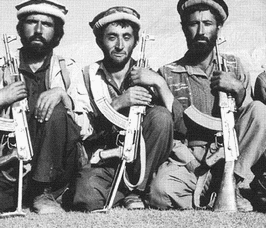
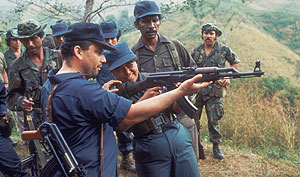


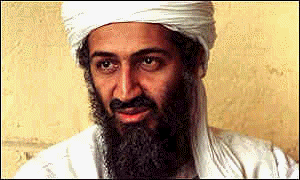
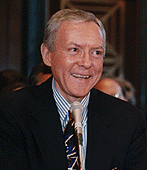
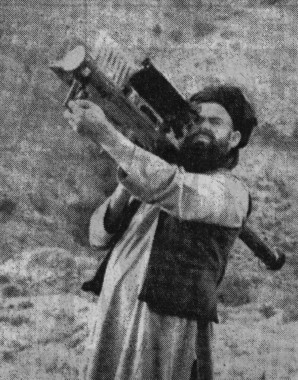
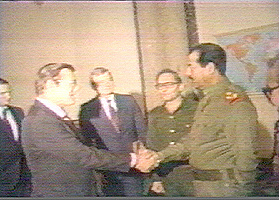
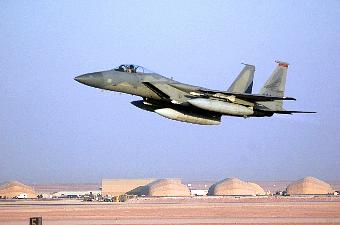
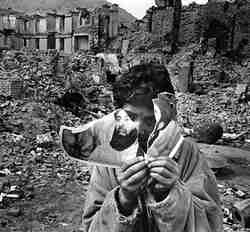

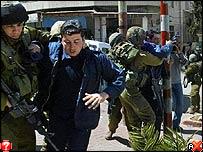
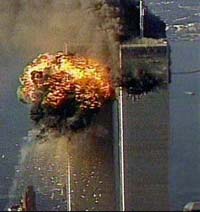

 © 2025 All Rights Reserved
© 2025 All Rights Reserved